1. Welcome
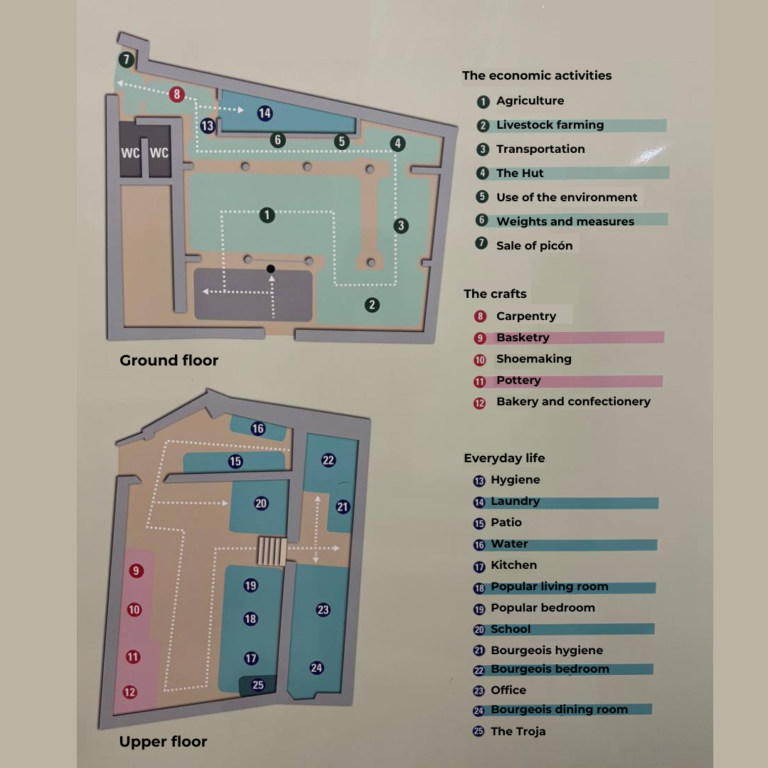
Welcome to the Ethnographic Museum, a journey into the past where you can contemplate the living history of our town, Medina Sidonia, located in the heart of the province of Cadiz.
The beginning of this museum relies on the collaboration of the neighbours who have donated all diferent types of elements and pieces creating this etnographic collection. Thanks to the donations and the collaboration of elderly people who acted as documentalists, the museum was inaugurated at the end of 2010, under the direction and dynamism of María José Dávila Cabañas, cultural manager of the town council of Medina Sidonia. The building was constructed in the seventeenth century and since then has undergone numerous transformations.
The museum has three exhibition areas. The first room shows the economic aspects related fundamentally to agriculture and livestock farming, the basis of this rural society, as well as other elements of the use of the environment.
In the second room we can contemplate the traditional trades of Medina and, in the third room, the recreation of spaces of everyday and bourgeois life.
2. The Barbershop
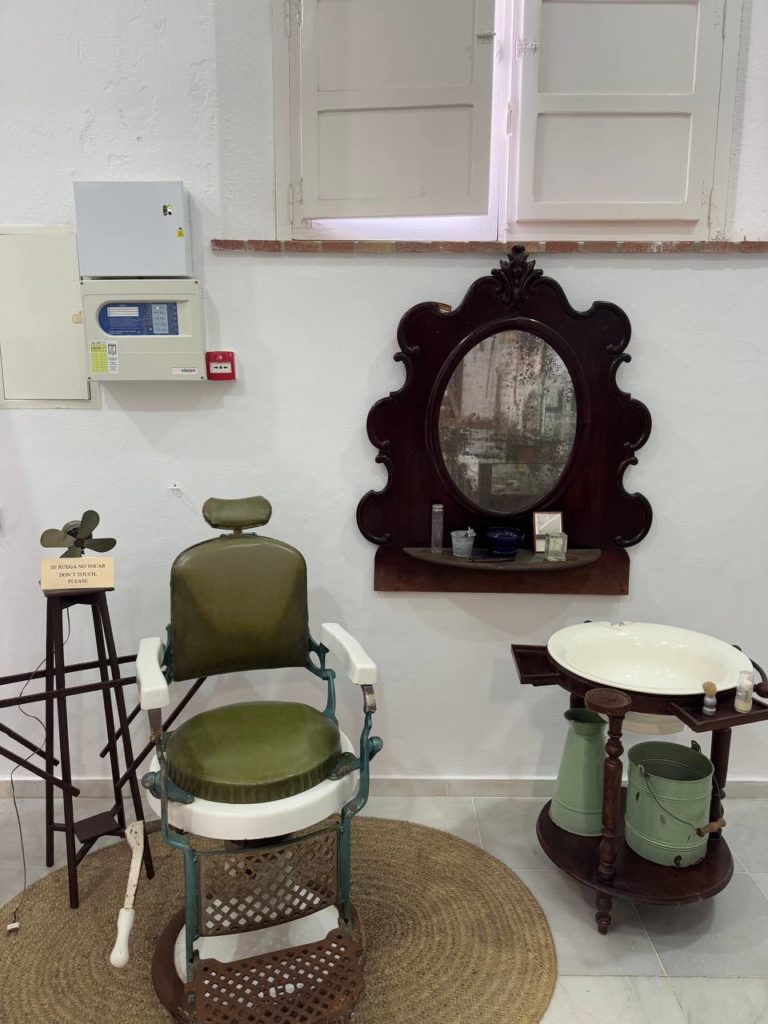
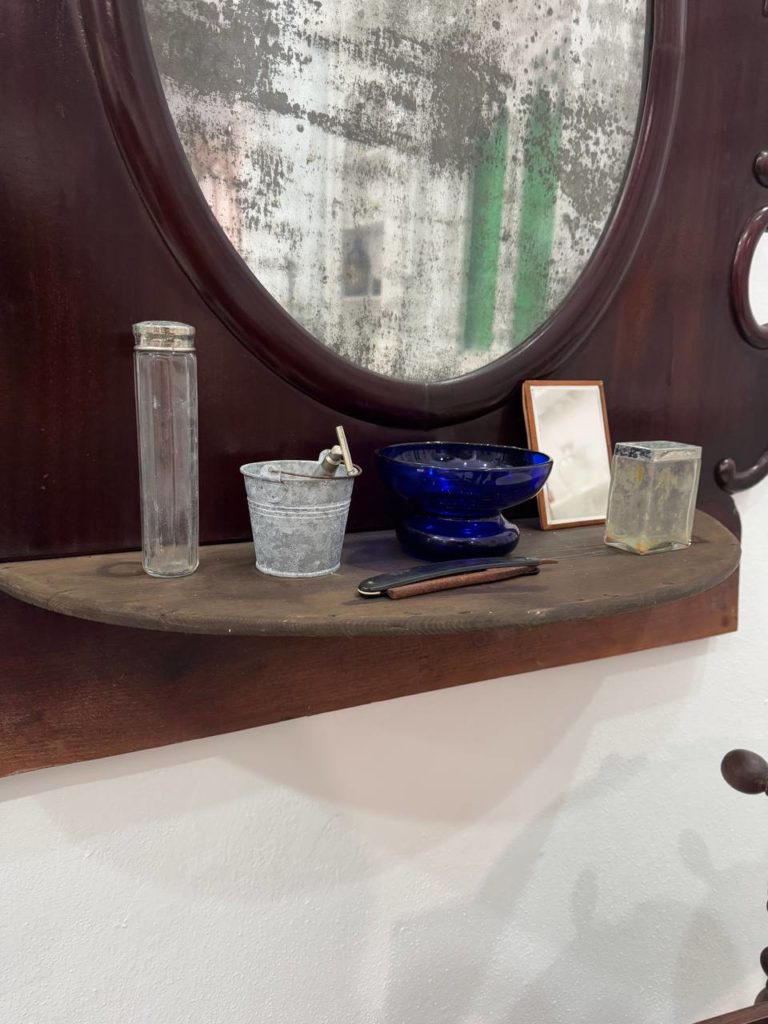
This is Diego de la Jara’s barber’s shop. You can see different shelfs and its mirror where the tools were placed and armchairs with headrests.
The adjustable chair, for both adults and children, facilitated the barber’s work. An emblematic piece is the bacina, or white earthenware basin, used both for washing the head and the shaving instruments.
Scattered around the room are utensils such as barber’s brushes, razors, hair clippers and brushes. The bottles with cologne dispensers, which had a graduated scale on which the customer indicated the amount of cologne he wanted to receive, are curious pieces of equipment.
Barbershops for male grooming also contained a complex world of relationships that went beyond the simple haircut or shave. In the barber’s shop, all the events and news of the locality were discussed, and the barber became the confidant and even the keeper of the keys of his neighbours.
The barber also performed bloodletting and extracted teeth and molars, for which he used a type of tongs. At the end of the 19th century, barbers and all those without a title were strictly forbidden to perform this type of operation.
3. La Botica
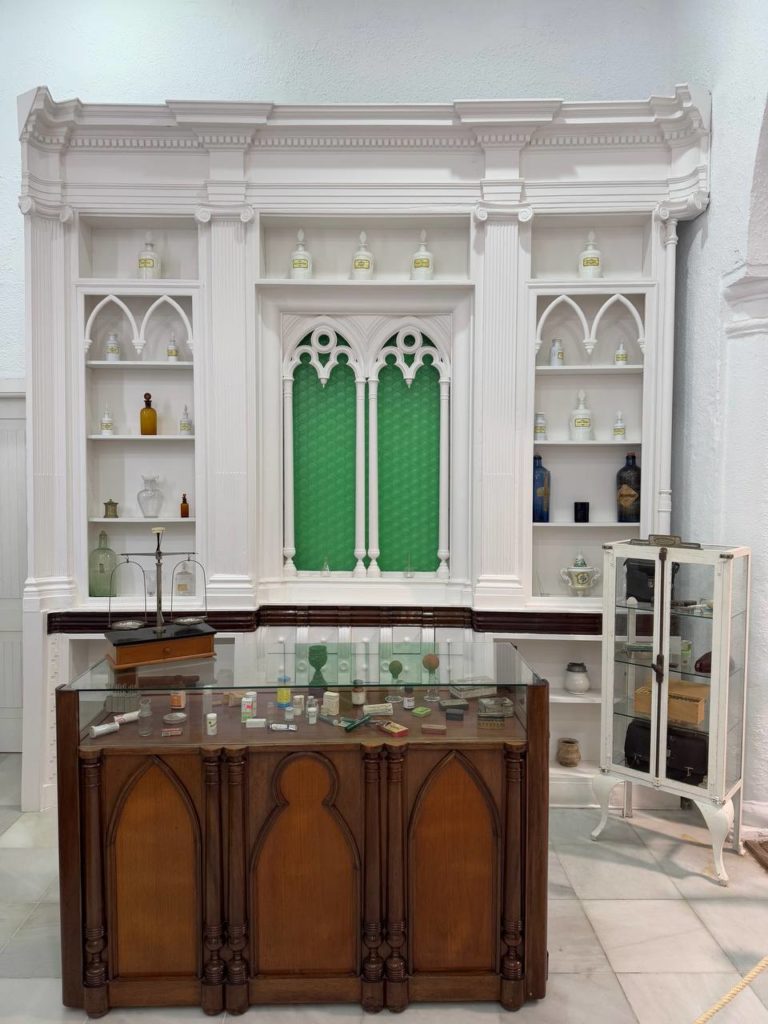
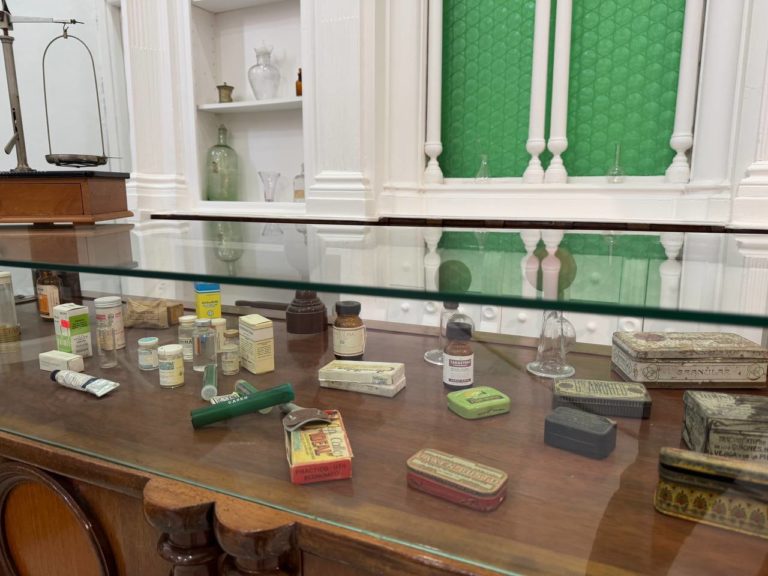
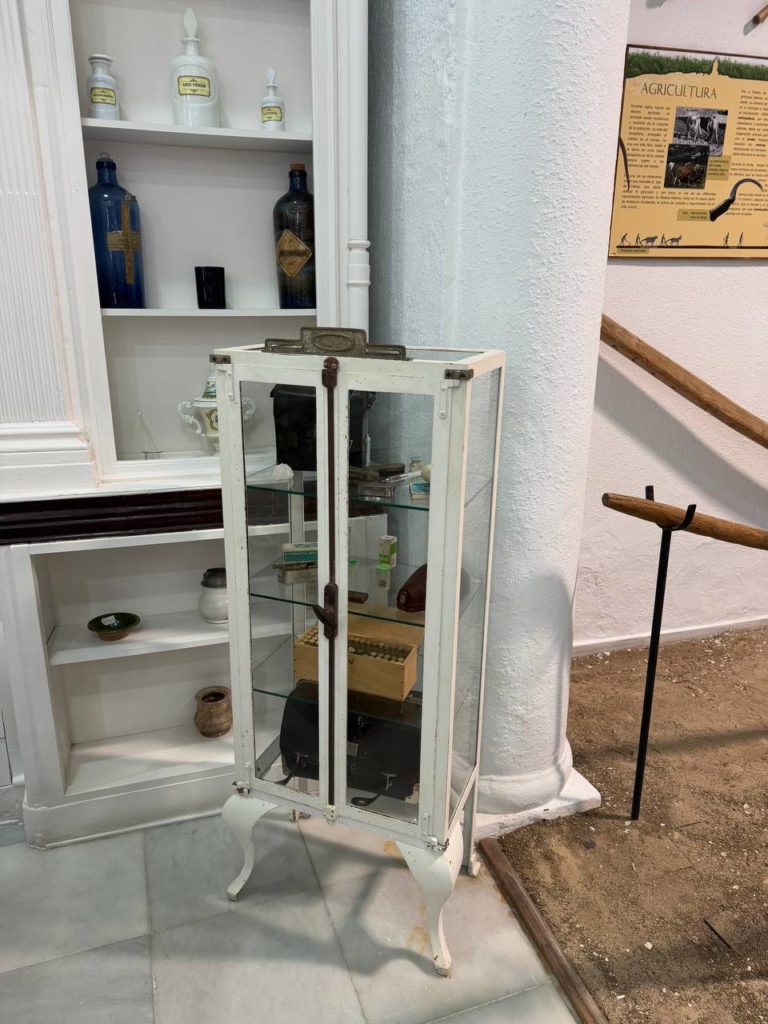
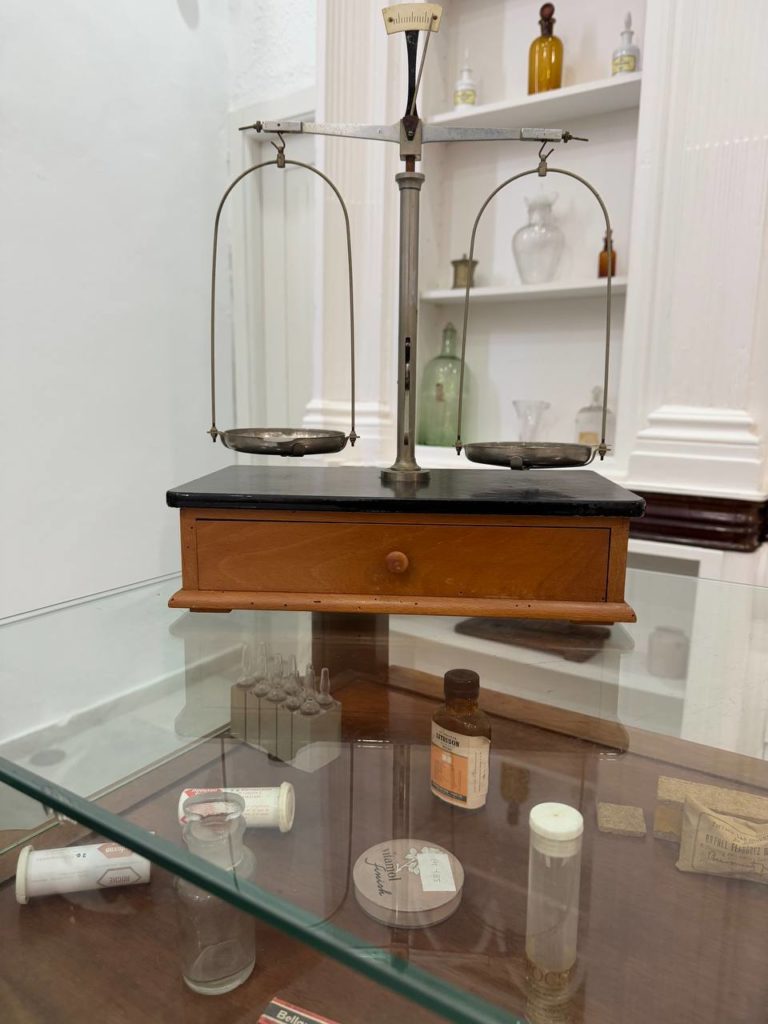
We come across the Botica de Benítez. During the twentieth century, this pharmacy served the inhabitants of Medina Sidonia, providing the pharmaceutical preparations issued by the local doctor, Don Santiago.
In the pharmacy, the dispensing table is the administrative centre and initial point of contact with the patient. On the scene, you can still see the bottles of medicines, such as monkfish or castor oil, so feared by our ancestors, used as a laxative.
There is a display cabinet containing a visitors’ case, stethoscope, blood pressure measuring devices and a collection of instruments, including a metal case in which syringes were sterilised with alcohol.
There is also a clinical analysis laboratory, where test tubes, cookers and preparation plates are kept. It also contains chemicals, reagents and dyes, as well as a pharmacy mortar made of iron and marble and a weighing scale.
4. Agriculture
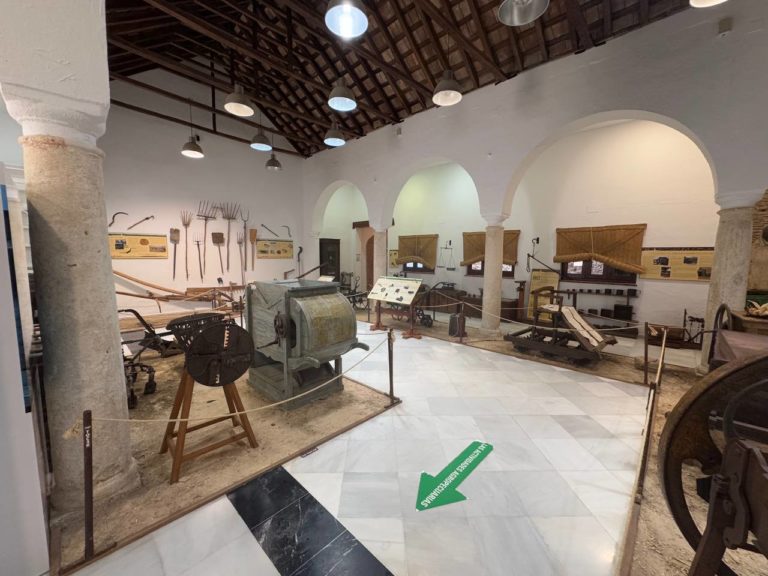
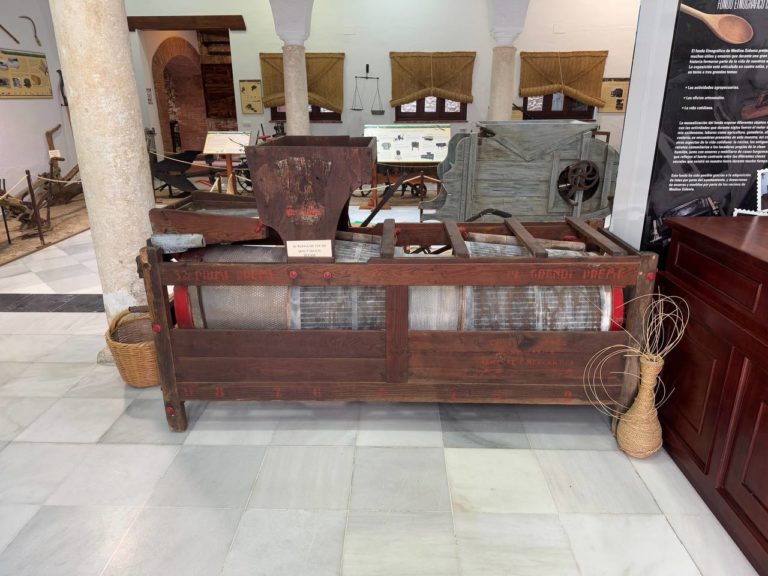
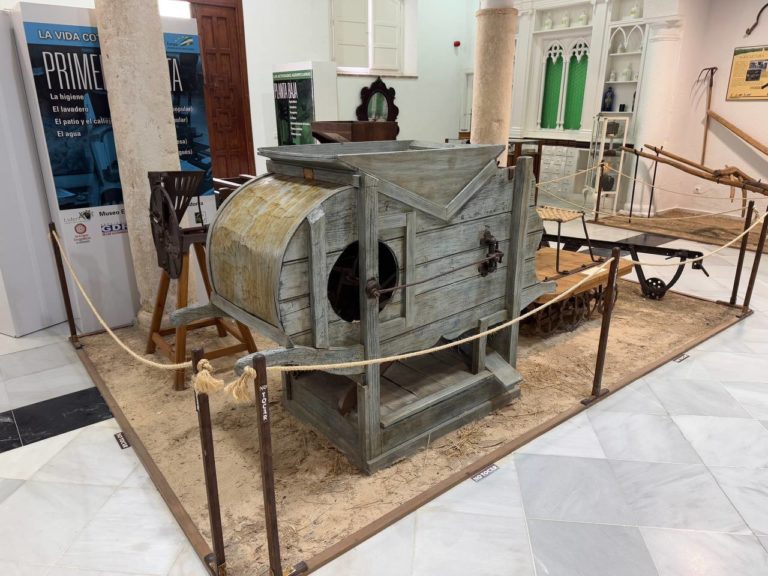
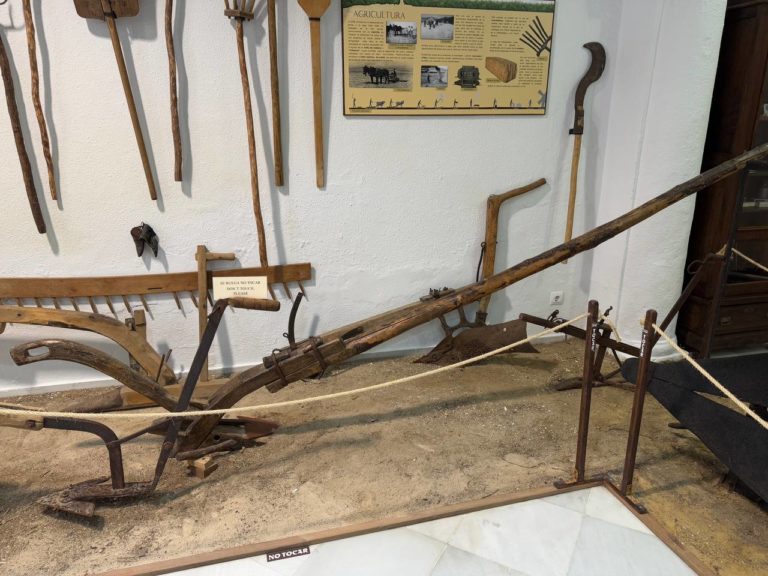
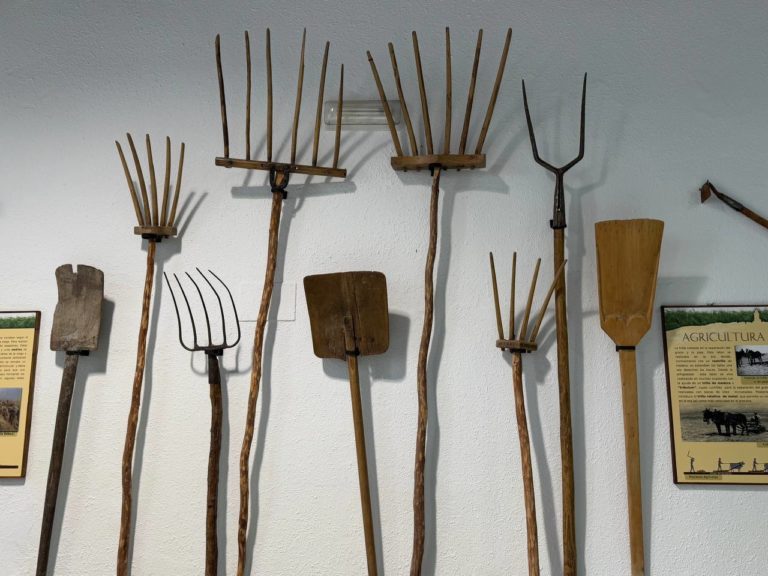
The traditional bases of Asidon’s economy were agriculture, livestock farming and, to a lesser extent, the craft, commercial and industrial activities linked to these sectors. This room may be a well-deserved tribute to the anonymous work of many men and women.
The centrifuge, a machine used for sorting grain, presides over the entrance. On the other hand, the winnower, which relieves manual labour by being used to separate the grain from the straw, with a particular characteristic: it was made for the use of a left-handed person, as it has the crank on the opposite side to the usual one.
You can also see different types of ploughs. The Roman plough is the large one, made of wood. The mouldboard plough, made of iron, was an innovation on the Roman plough. It was heavier and made deeper furrows, which aerated the soil more and made it more productive.
Other tools used to prepare the soil include hoes, spades and weeders used by hand, while a cultivator and a harrow or harrow are on display, pulled by animals. Other tools on display include a sowing machine with a hopper, a pest control sprayer and two threshing machines.
For mowing, there is a group of sickles, scythes and pitchforks, as well as thimbles, leather sheaths to protect the fingers while mowing.
5. Livestock farming
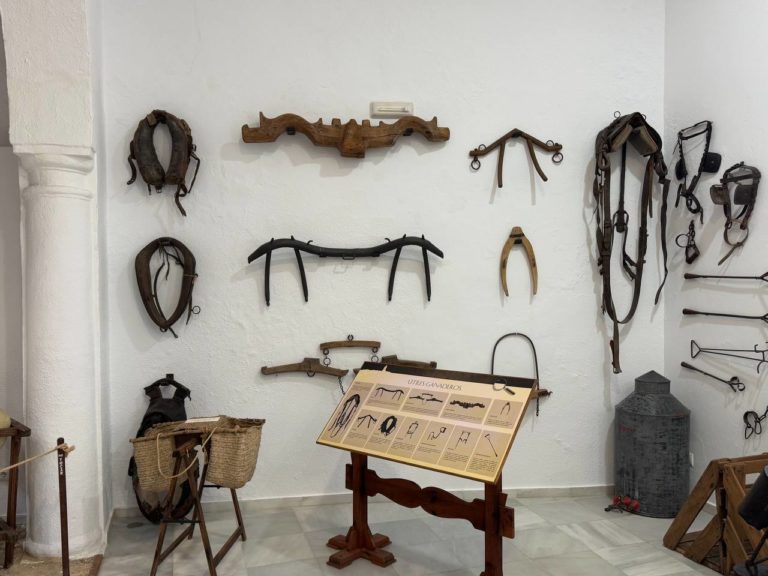
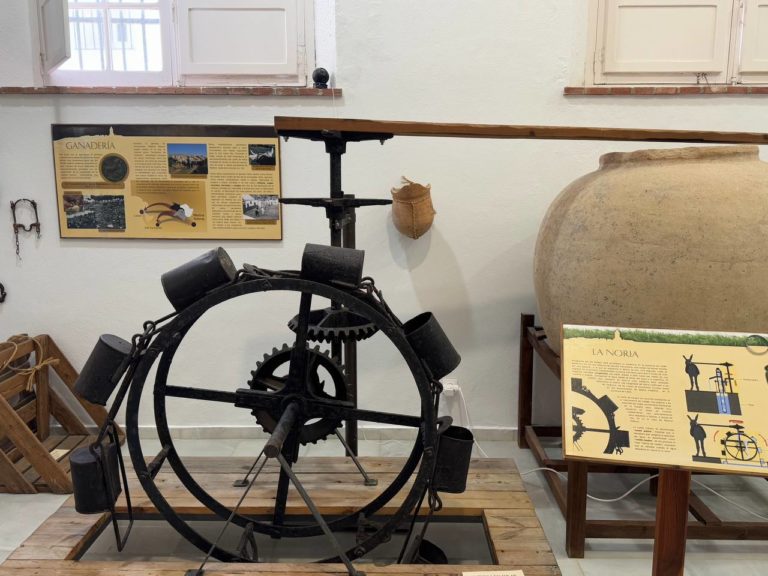
In addition to the tools used in the cultivation process, the room also has a section dedicated to livestock farming. Here you can see tools such as the trabaderas, which prevented the animal from travelling long distances, branding irons and harnesses for horses such as cangas, cangones, colleras, horcates, yokes, cabezales, serón and aguaderas.
Also present is the recreation of a typical waterwheel, known as the ‘noria de tiro’ or ‘noria de sangre’, as it is a live animal that provides the power to make it work.
6. The hut, beekeeping and veterinary


A testimony to the importance of country life in the area is the reproduction of a hut, inside which you can recognise some of the tools used in everyday life, such as the hunting hooks, perches for hunting small birds, devices for preparing cartridges or traps.
They are also made in a very special way, as the paniza is well placed so that it is waterproof for rainy days and the humidity of the night. In this way, they build shelters that are neither cold in winter nor hot in summer.
As far as beekeeping is concerned, there are two types of hives, box hives and cork hives, as well as the beekeeper’s suit and the basket for straining the honey.
In the next aisle you can see the collection of grain measures, as well as a Roman scale and a balance as a weighing instrument. The scales with their weights could be found in small bakeries, small bread shops, or in food shops.
At the end of the hallway there is a display case where the veterinary instruments are on display and also an autoclave, a metal container that allows working with high-pressure and high-temperature steam to sterilize the instruments.
7. The Toilet
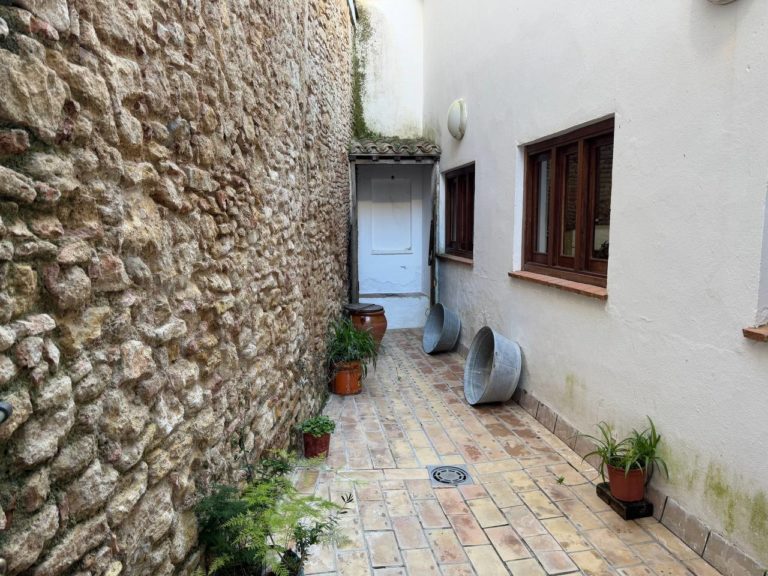
In the courtyard we find the toilet, outhouse or communal bath. The old tenement houses had only one shared bathroom, which was usually located in the courtyard or common yard of the house. That is why our ancestors had a chamber pot under the bed, so that they did not have to go out in the cold night to relieve themselves.
On the other hand, the zinc basins were the old bathtubs. It was customary to bathe once a week, almost always on Sundays, before going to mass, or when going to the doctor.
8. Carpentry
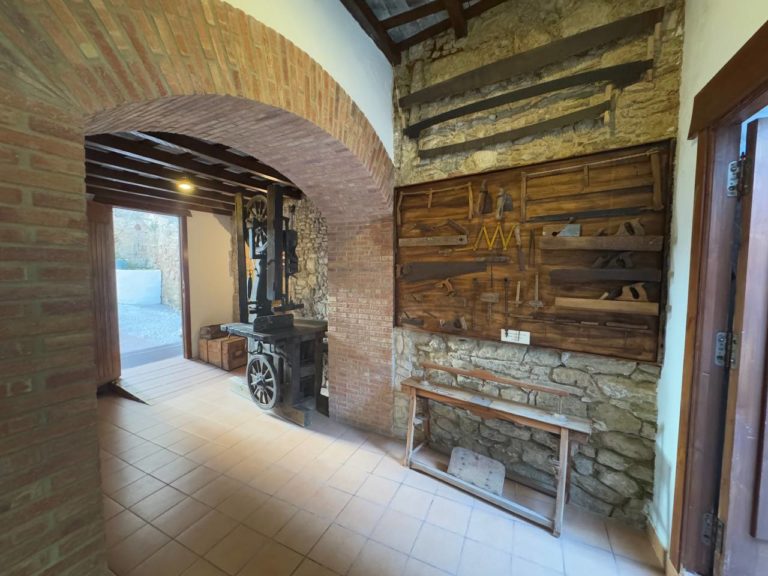
In the following scene you can see different tools used by carpenters for woodworking, such as the level, planers, drills or saws. The jig saw, which allowed curved cuts and finer work to be carried out, and the band saw, which works by means of pulleys and was used to cut large planks of wood, stand out.
The tools suffered from wear and tear due to use. They were sharpened on stones, operated by hand or pedal, which were wetted with water to attenuate the heat generated by friction.
9. The "Covacha"
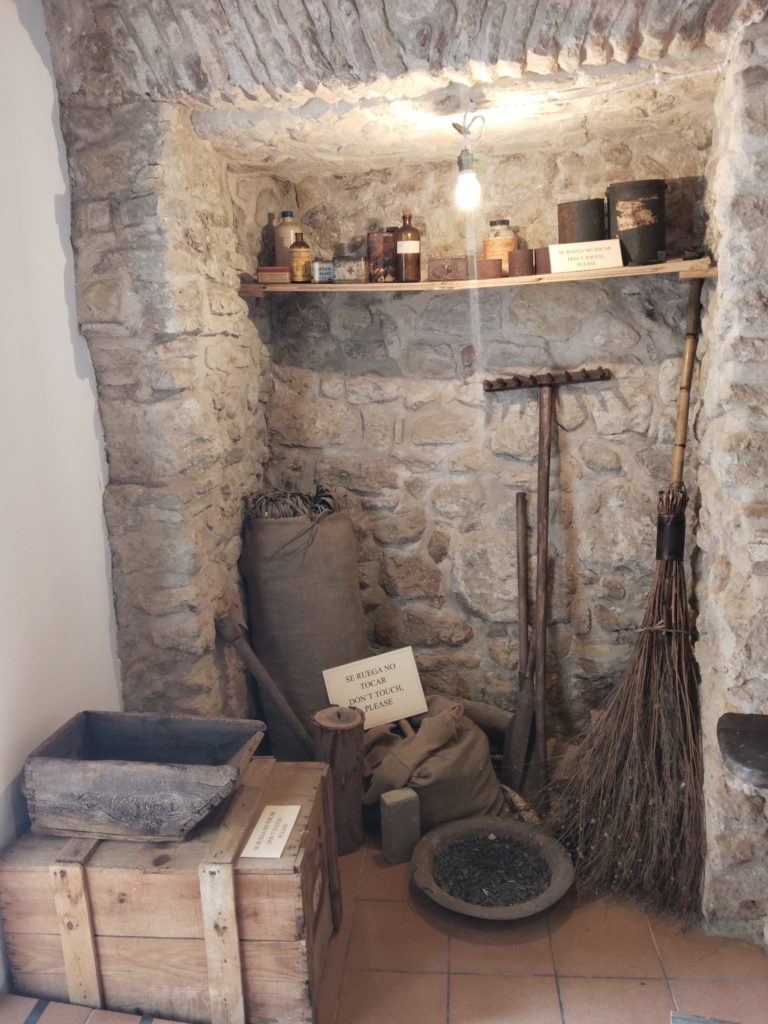
We are in front of the Covacha, a space dedicated to the storage of products that were used in the home, such as, for example, the oil for lighting the oil lamps, which were the lamps used from the 18th century onwards and which used oil as fuel.
There were also preparations for the “copa de picón”, which were necessary and very economical to light the fire on cold evenings.
The brazier had to be prepared and lit in the courtyard, because of the fumes and smells given off when the alcohol or fuel used was added. It was very common to leave the ash from the previous use so that it would burn better.
An example of the use of the “copa de picón” can be found in the humble rooms displayed in the next room.
10. The Courtyard
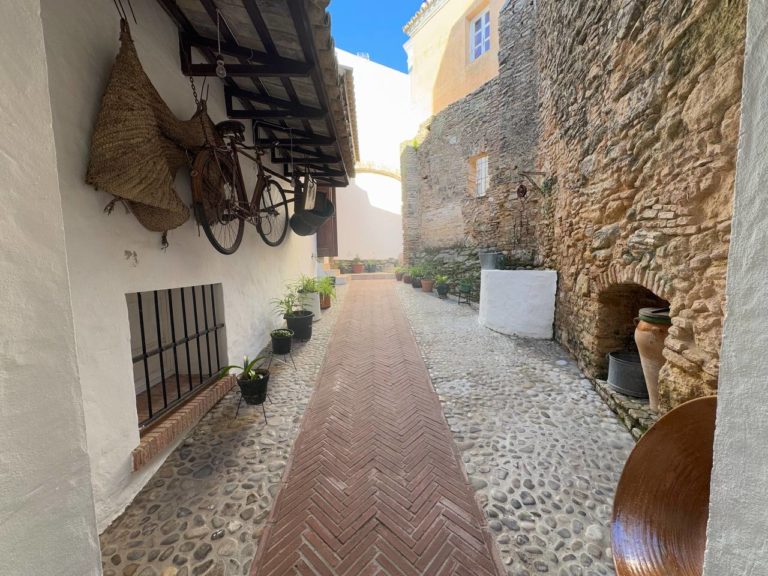
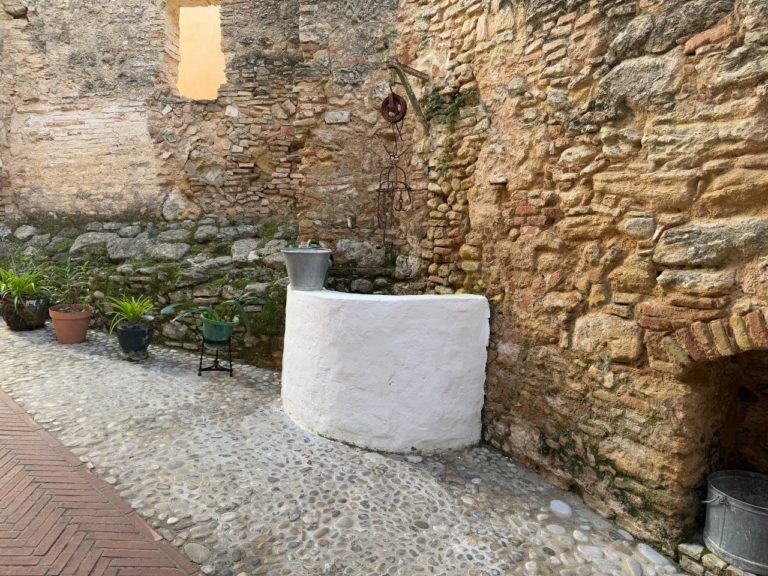
The courtyard preserves part of the original medieval walls. Here we can see the well, with the bucket-rescuer, popularly known as the rebañaera, a hooked contraption that was used when the bucket came off the rope and fell into the well. It could also be used to keep fruit fresh by lowering the bucket into the well.
Today, water is such an easily accessible element that having it at home only requires a gesture, as simple as turning on a tap, and there it is, clean, abundant and seemingly inexhaustible. However, this was not always the case, and until not so long ago, wells, cisterns and fountains were the ways of obtaining this precious resource. The wells, mostly lined with masonry and lime, sought water from underground aquifers. They could be shared by two or more houses, known as medianeros or cuarteros. As a rule in this type of shared well, only a single bucket and rope could be used, with the aid of a pulley, or garrucha, which brought the water to the surface.
Very important in the courtyards is the space for the flowerpots, occupying the main place, and everything that was not used daily, such as the pots and the slaughtering table, was placed in such a way as not to disturb them.
11. The Shop
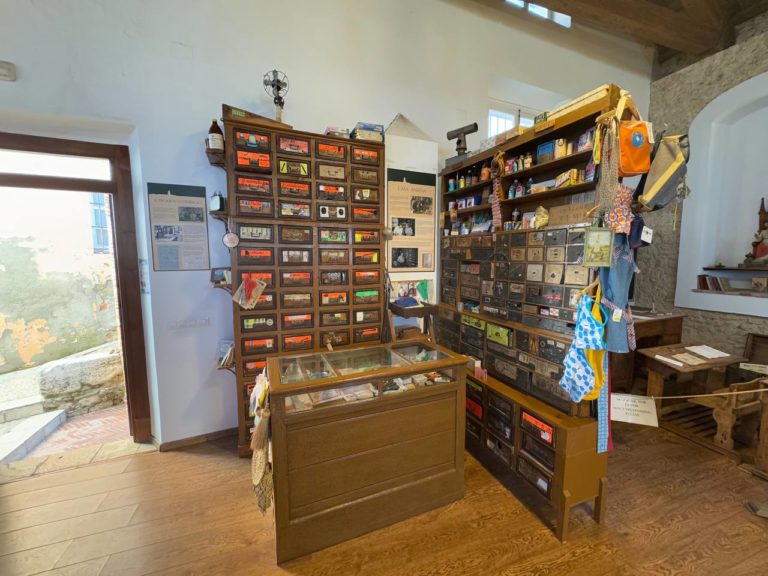
As you enter the next room, you will find the Casa Aniana shop. This establishment was run by a married couple, Carmen and Javier, a family business that opened in the forties of the twentieth century and remained active until 2020, offering a complete assortment of all kinds of products, from clothes to wicks for candles.
The payment system at that time was very flexible; if you didn’t have the money to make the purchase at the time, they would write it down in a notebook and you could pay when you could.
12. Basketry and palm
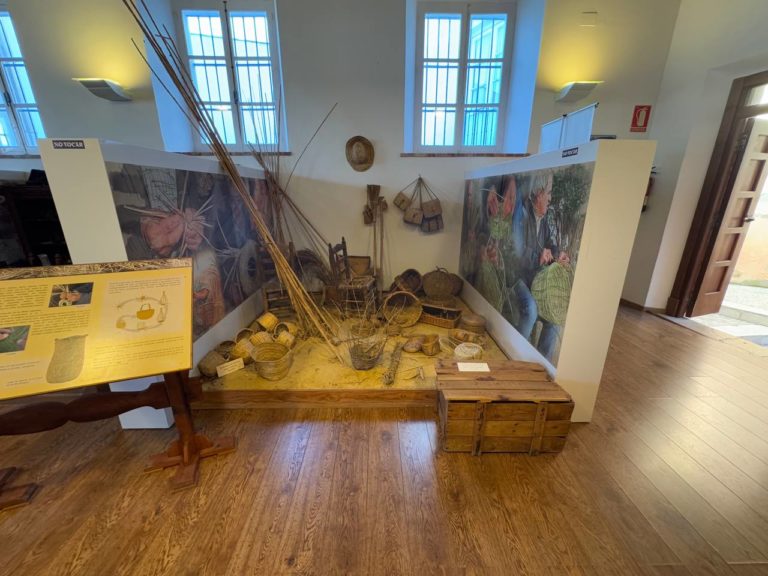
It is a craft activity with a long tradition. In times when plastic did not exist, baskets and objects made of vegetable fibre were a basic necessity.
The raw material for these objects could be esparto grass, hemp, palm, palm heart or wicker. These materials, carefully plaited by skilful hands, became useful objects for everyday life, such as baskets, blinds, sieves, hats and an endless number of different items.
In order to make any tool, the raw material had to be collected and dried, normally in the sun and taking care not to get it wet, as humidity could damage the fibre, which made summer the most favourable season. Subsequently, in many cases, some materials had to undergo a simple transformation process. Cane stalks could be split and palm leaves could be boiled and pounded with a mallet, although they could also be worked dry.
Today, only a few artisans work with palm leaves on a non-professional basis.
13. The Shoemaking
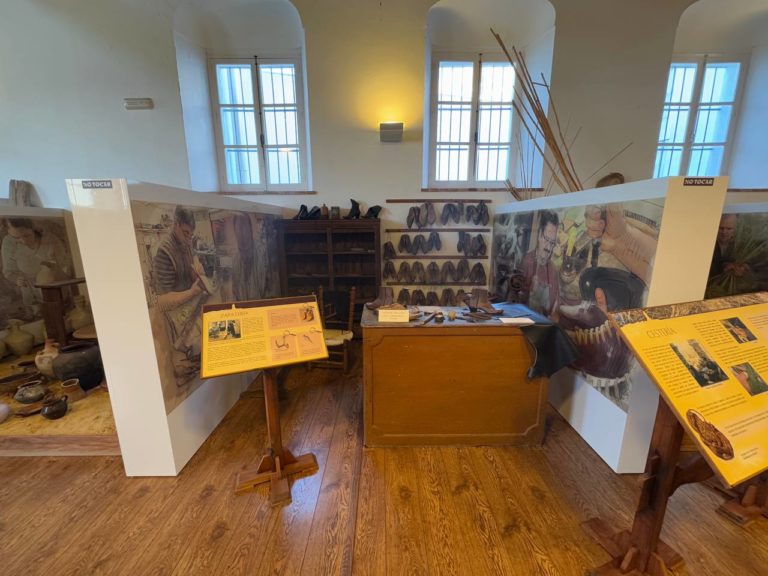
This activity was carried out in small establishments run by a master, who carried out the most complex tasks, assisted by several apprentices. Two basic types of work were carried out in the workshop: raw materials, or the manufacture of new footwear, and the repair of damaged footwear.
The materials used were different types of leather, cork and hemp thread.
In the room we can see the characteristic backless stools, the shoemaker’s anvil, the wooden lasts of various sizes and the cutting and sewing tools such as the awl.
Scattered around the room are some examples of booties, the oldest dating from the beginning of the century, the space being frozen in time, as the shoe shop of its owner, Chano, remained as it was, taking only his canary with him.
14. Ceramics
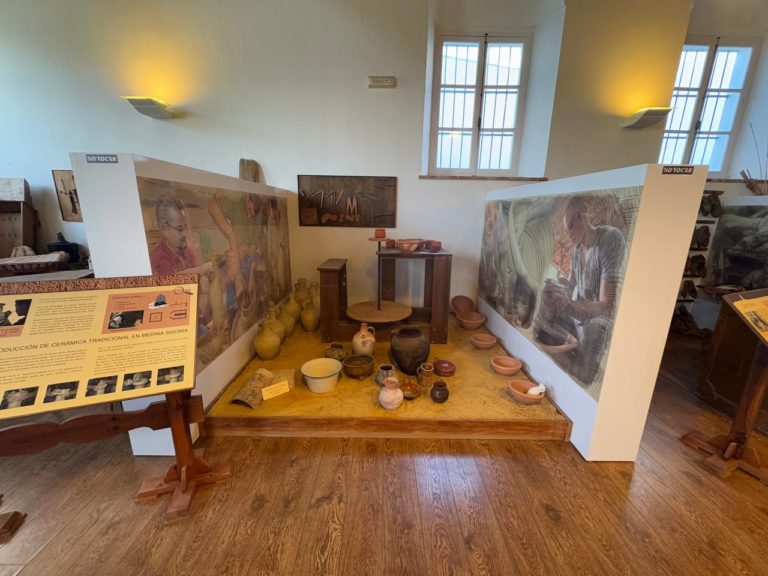
During the 17th century Medina had as many as 27 workshops producing Dutch imitation pottery. These potteries supplied both the surrounding area and the overseas possessions. Thanks to the characteristics of the clay soil of Medina Sidonia, the pots had a great reputation for the flavour they gave to food.
Until the mid-20th century there were still four pottery workshops in Medina Sidonia, which collected clay from nearby areas, such as Prado de la Feria.
This section includes two sections, related to different types of pottery that are collected in our Museum: one for domestic use and the other decorative. The main feature of this scene is a potter’s wheel, which is accompanied by gauged measures for liquids.
15. Bakery and confectionery
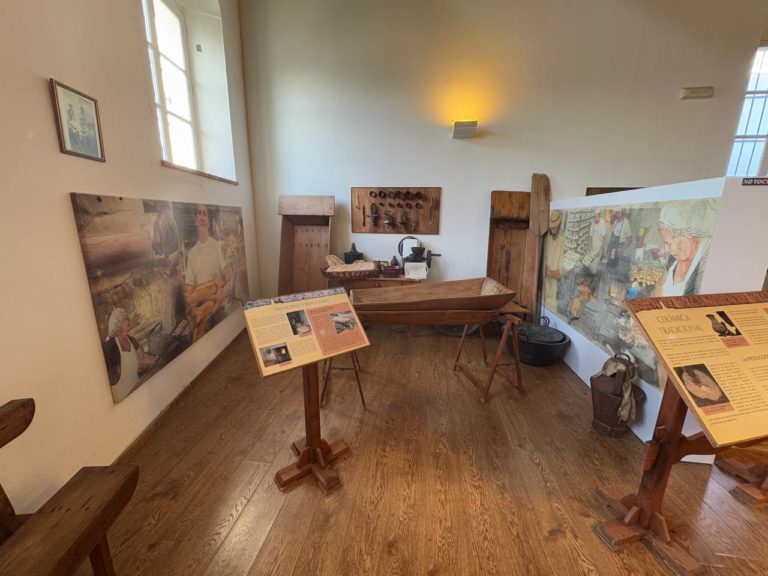
In the Hispano-Muslim period, Medina Sidonia became the cradle of Andalusian confectionery, leaving us the legacy of our sweet par excellence, the Alfajor, considered to be the oldest nutritional bar in history.
Along with the alfajor, the following stand out: tortas pardas, an almond cake filled with angel hair, and amarguillos, a bitter almond pastry, from which it takes its name.
We can see the troughs where the dough for the different sweets was made, the work table with some of the essential ingredients in our confectionery or the tools for making them, such as the moulds, nozzles or sprinklers.
16. The Kitchen
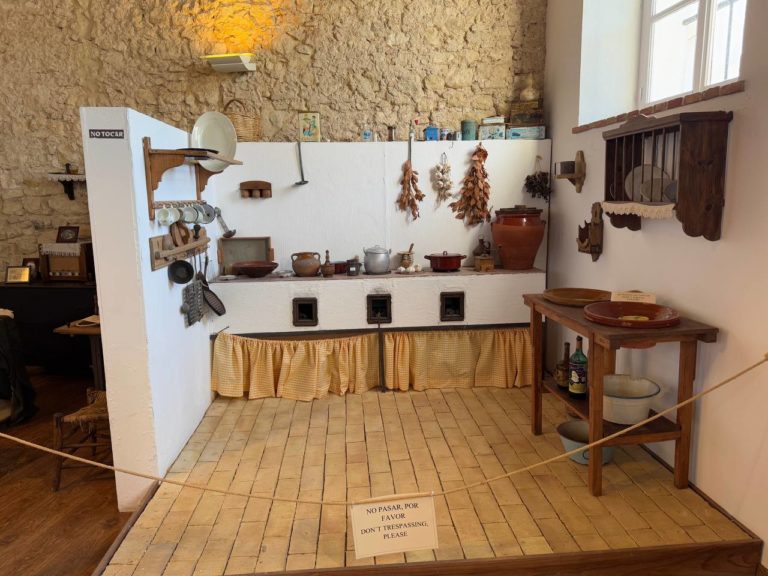
It was the most important room in the house, since, in addition to the preparation and consumption of food, it was where the daily dramas and joys took place.
Its crockery is placed on the spits. The cooker was made of iron and ran on charcoal. This type of kitchen, like the bathroom, was usually communal, located in the courtyards, and each neighbour owned a cooker.
17. The Troja
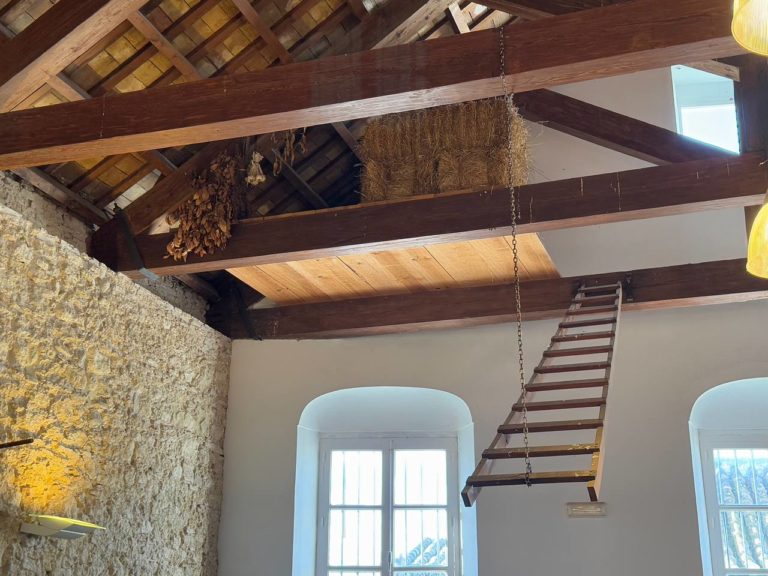
The troja, trojón, soberao, altillo or attic, are different names for the same space, the purpose of which was to gain space in the house to store what was not usually used. Made of wooden planks, they served as storage rooms, where tools, feed and fodder for the animals were kept, and from which, among other products, strings of garlic, peppers, bunches of laurel and thyme were hung, which were then used as seasoning for different stews, sauces and dressings.
18. Humble Rooms
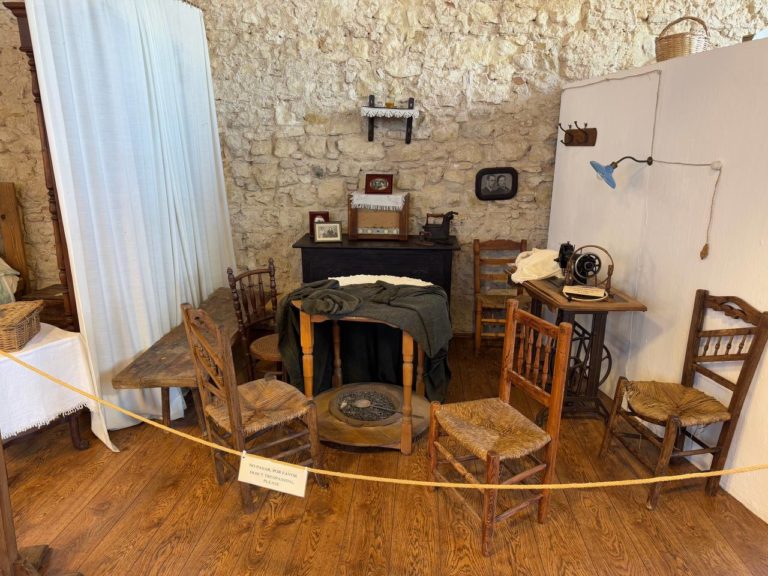
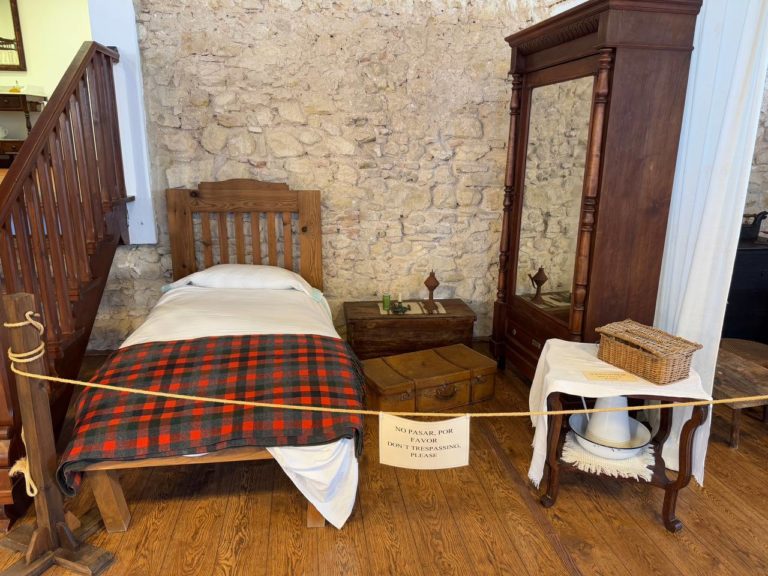
Simplicity is still present, especially in the wooden furniture, with the table at the centre of the table as a catalyst. The domestic equipment also reflects the shortage of means.
Those who could afford it had a radio, making him the most popular neighbour in the street, whose house everyone came to listen to the news. In the afternoons, programmes and soap operas, such as Matilde, Perico y Periquín, Ama Rosa or Lucecita and at night, at low volume, Radio Pirenaica, to be informed of what was happening in Spain as told from outside.
Above the table we see the photos of a married couple, something not very common since having a simple photograph could be considered luxury material.
The room reserved for the bedroom retains the secluded atmosphere of a place dedicated to rest. It used to be separated from the living room by curtains. The furniture, essentially practical in nature, is rather sober, with wooden or wrought iron pieces being common. The mattress could be stuffed with wool, flock or farfolla (which was the leaf of the corncob).
19. The School
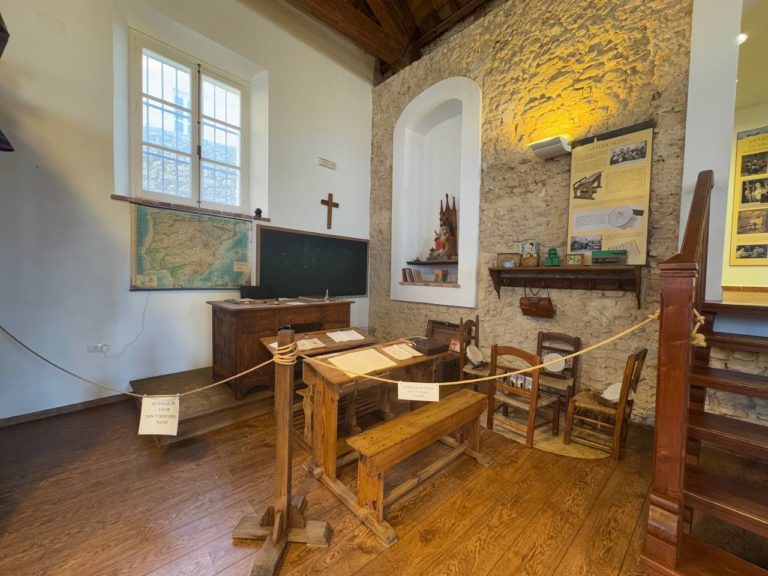
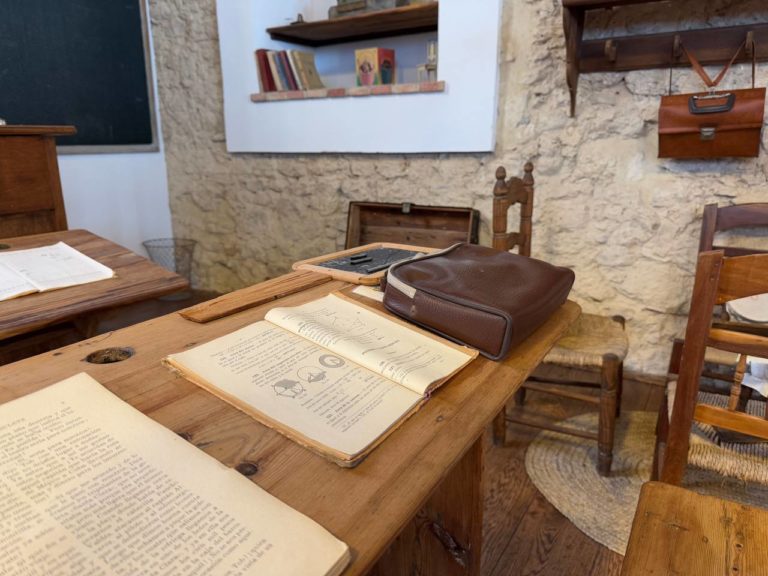
This room is a reproduction of the traditional model of a primary school which, until the fifties of the twentieth century, hardly underwent any variations. It is a mixed school were boys and girls of all ages were taught at the same time, although they were most often separated. The premises were usually an outbuilding of a private house, not fitted out for this use, so it often lacked some elementary conditions such as ventilation and heating. For this reason, in winter, the children carried metal tins with an inner tank in which they put some embers to warm their feet.
Teachers were poorly paid and their work was little recognised, depending on the contributions of their pupils’ parents to make it to the end of the month.
On the other hand, the education of girls was seen as something marginal, being enough to the mentality of the time to teach them mathematics for the good administration of the house, some notions of Sacred History and, above all, sewing. Under the supervision of the teacher, the children were divided according to their ages into two groups: the younger ones around a small low table, and the older ones around a larger one with benches.
This recreation shows a small collection of textbooks, materials such as rulers, pencils and watercolours, and writing utensils such as inkwells and notebooks. On the backs and seats of the chairs, there are book holders, metal cases, sewing boxes and frames, some with their work already begun.
20. The Bourgeoisie's stay
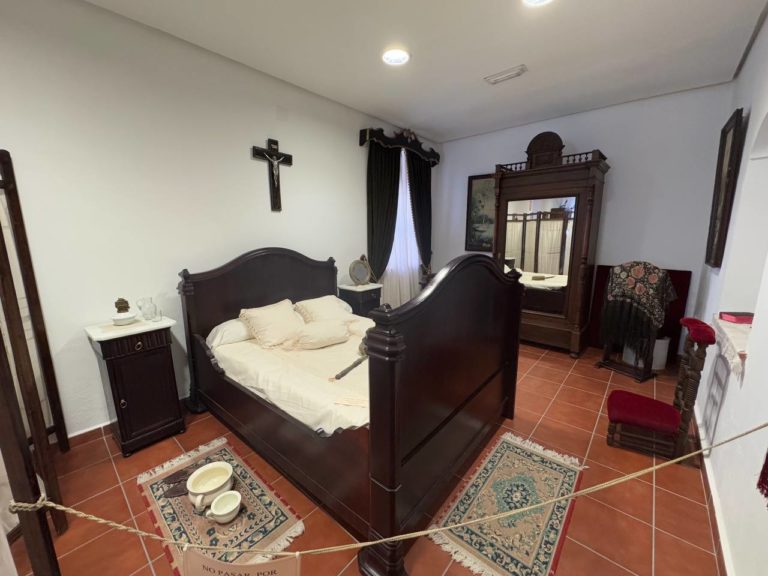
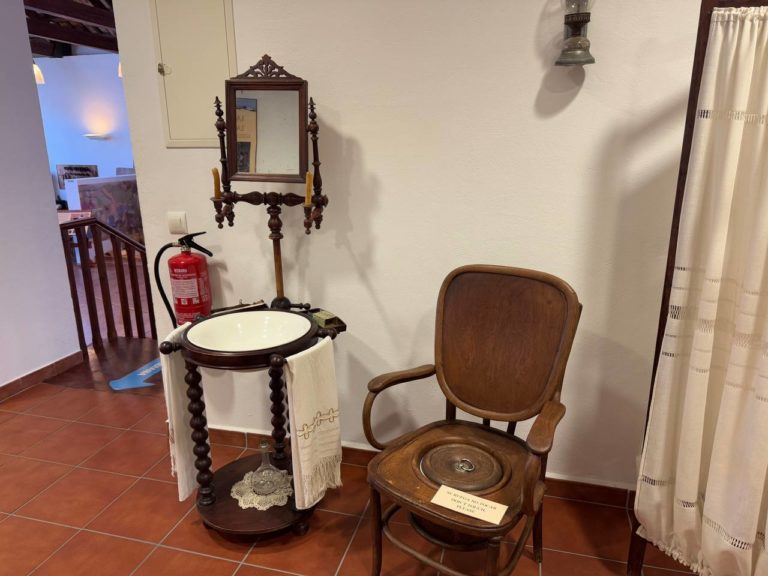
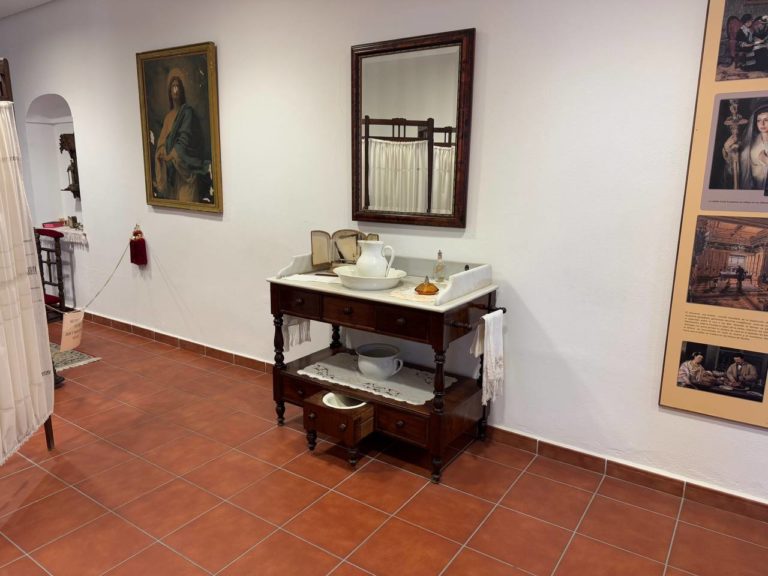
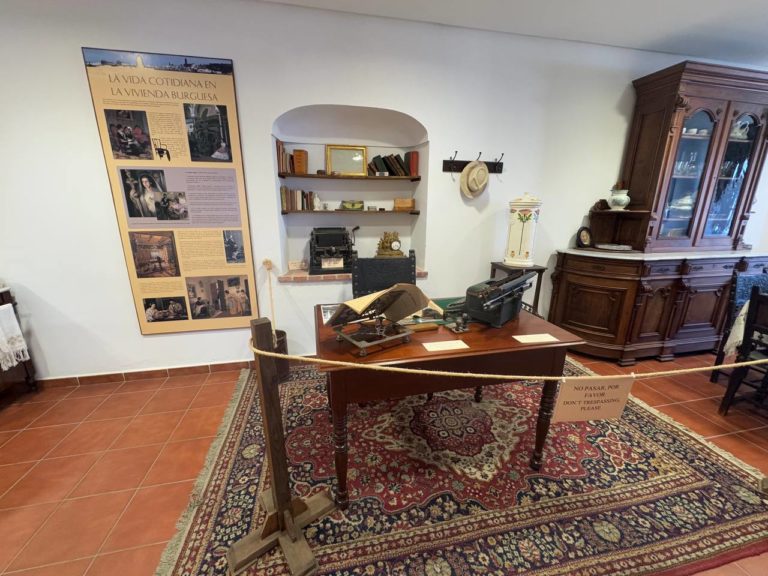
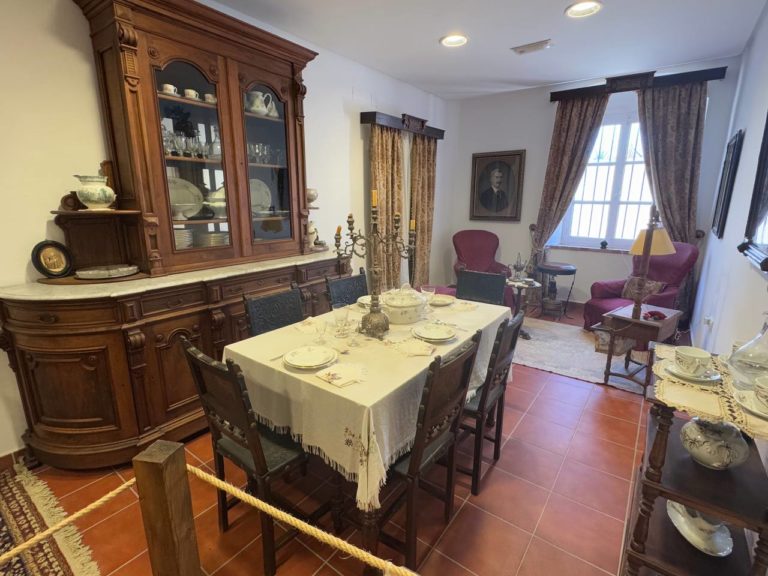
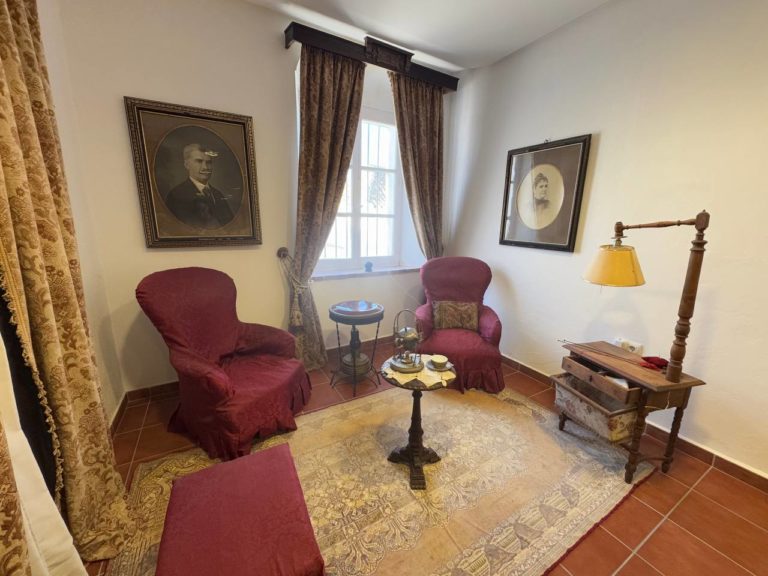
The bourgeoisie of Assidon at the end of the twentieth century consisted mainly of large agricultural landowners, rentiers and liberal professions such as doctors, lawyers, notaries and solicitors of foreign origin.
The appearance of the house honoured its owners’ desire for respectability.
The sideboard, better known as the bar cabinet, was used to store all kinds of utensils: crockery, table linen, papers and, at Christmas time, sweets. The crockery contained in the sideboard was reserved for special occasions and special events, such as Christmas Eve dinner, as the crockery used on a daily basis was rather more modest.
In the master’s office we can see the typewriter, a multicopier, Rotary, to make leaflets, and a small library, with all kinds of books, from religious subjects to pirate books.
In the dressing table, toiletries such as wash basins, hair tongs, hairpins and comb holders. The bidet built into the cabinet itself in a drawer is noteworthy.
Above the bed there was a heater, which worked with embers, normally reused from the living room brazier or the kitchen fire.
The religious sentiment of the time is palpable in many details, such as the crucifix, the rosary, the image of the Virgin, the holy cards of the saints or the old missal.
21. End and farewell
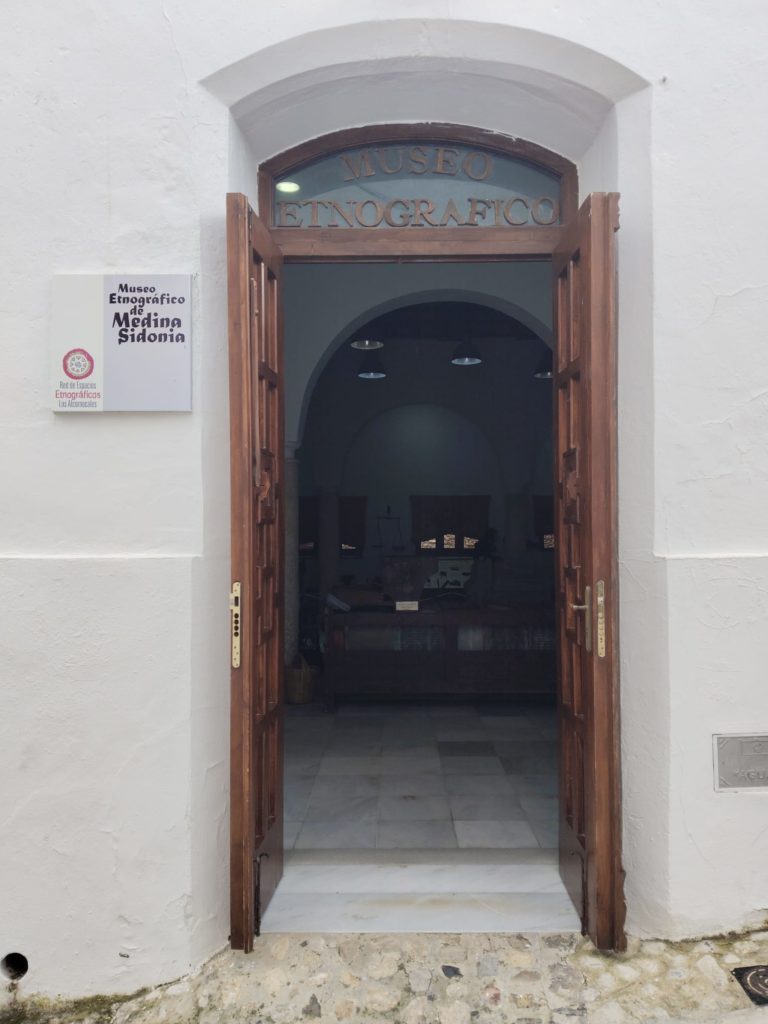
This concludes our tour of the Ethnographic Museum of Medina Sidonia. We hope you have enjoyed this experience and that you have taken away with you a piece of the rich history of this land.
Remember that each object and each room tells a unique story about the life and traditions of this municipality. Don’t stop at just visiting the museum and discover all that our beloved city has to offer.